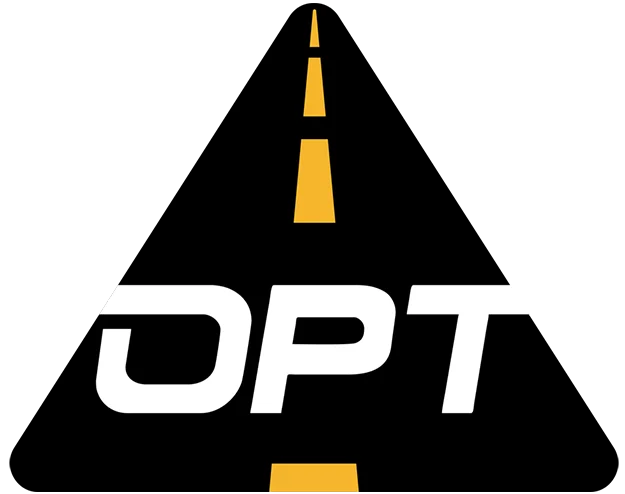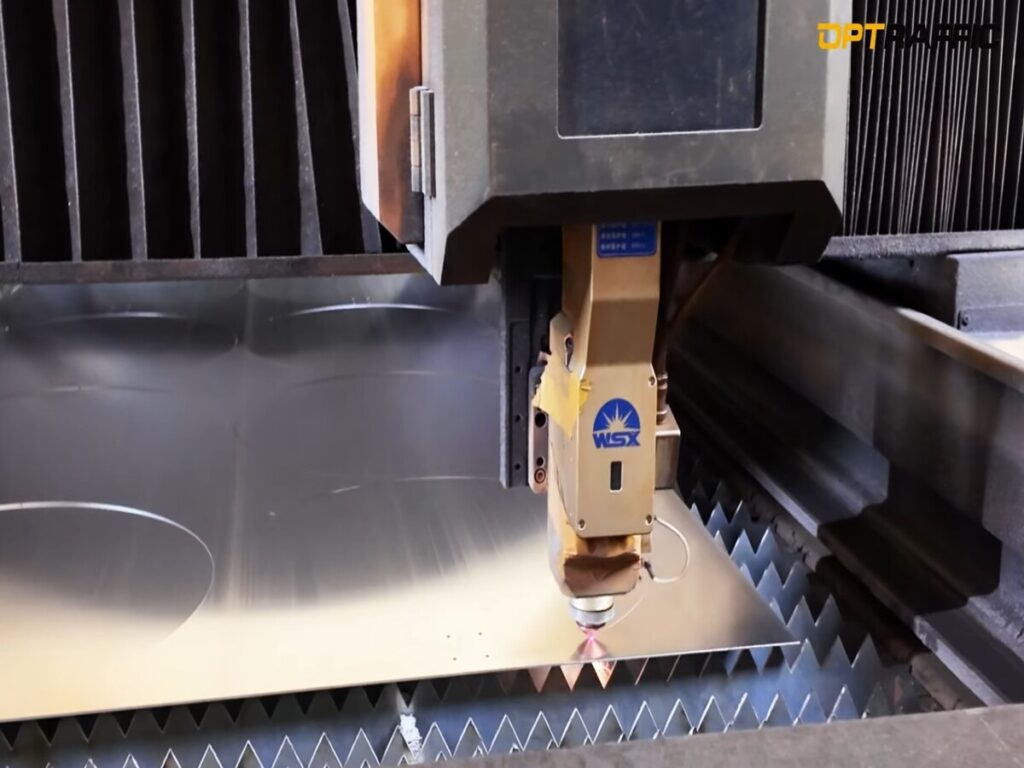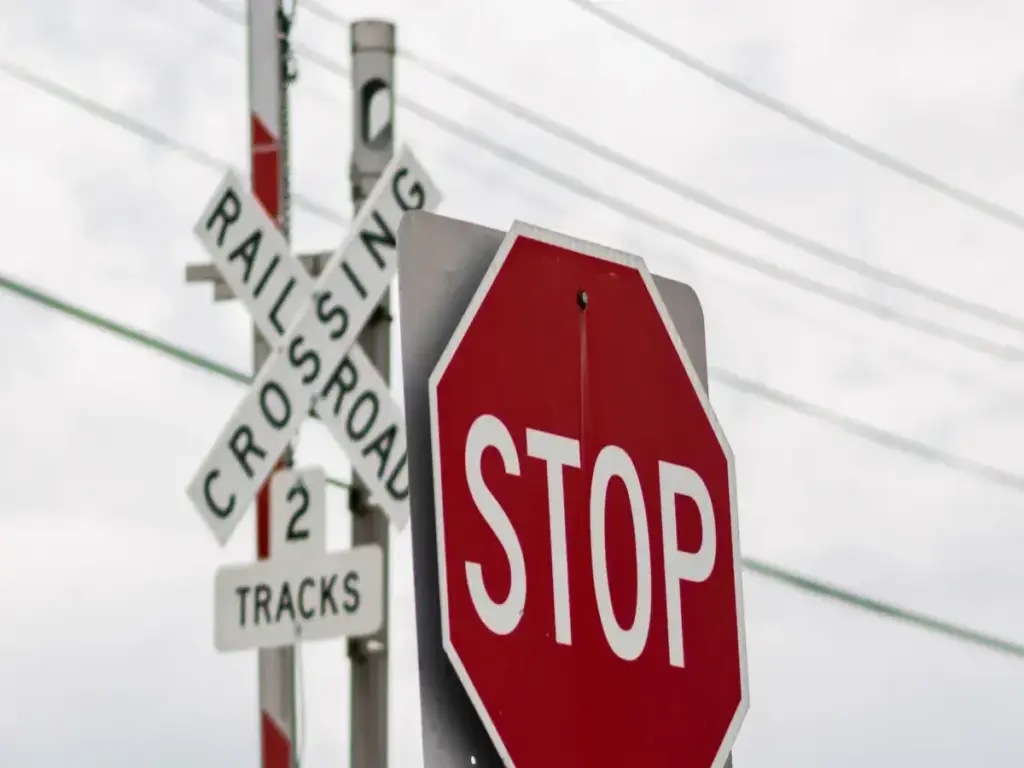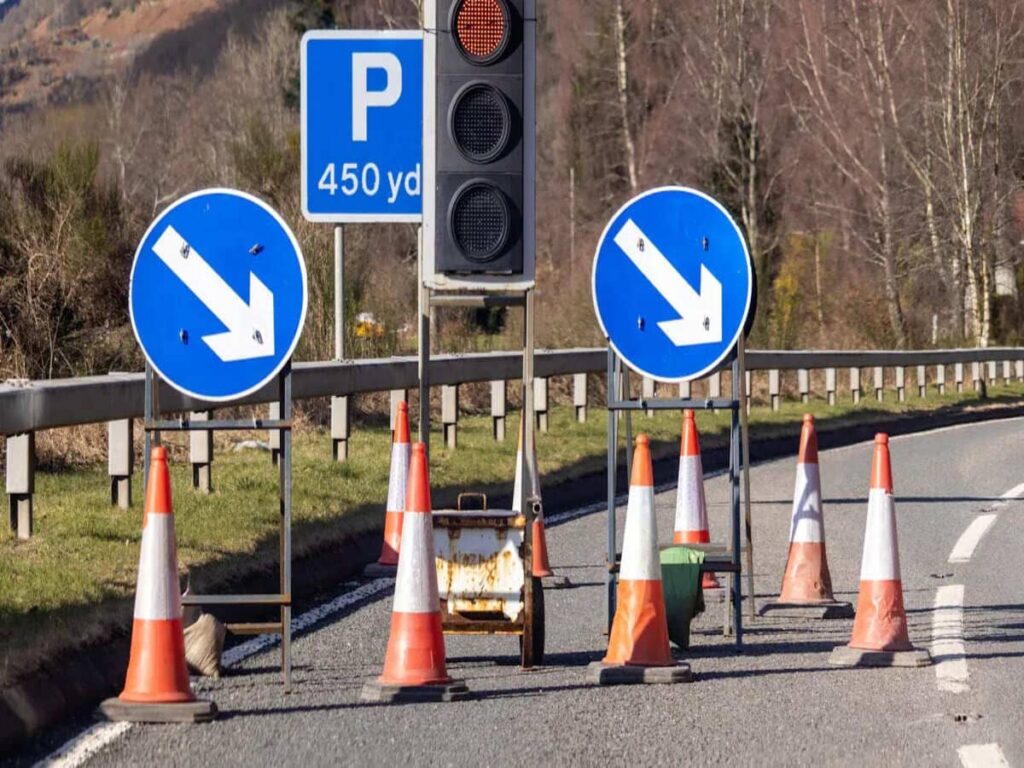
Traffic delineators play a vital role in improving road safety and guiding drivers effectively. Traffic delineators for sale reduce traffic-related accidents by up to 40%, according to the Federal Highway Administration. Their ability to provide clear visual guidance makes them indispensable in modern infrastructure.
You can observe a growing demand for delineators for sale in regions like India and Brazil, where urbanization is accelerating. Rapid urban growth in cities such as Mumbai and Jakarta has increased the need for effective traffic management solutions. Additionally, investments in road infrastructure across developing regions have further fueled the global market for delineators.
As urban areas expand, delineators help address safety challenges by creating organized and safer traffic systems. Their use ensures smoother navigation, especially in crowded environments, reducing the risk of accidents and enhancing overall road safety.
Market Overview

Current Market Size and Growth Rate
The global traffic delineators market has shown remarkable growth in recent years. In 2023, the market was valued at USD 2054.8 million. Projections indicate it will reach USD 2896.4 million by 2031, growing at a compound annual growth rate (CAGR) of 4.4% from 2024 to 2031. This steady growth reflects the increasing importance of traffic delineators in modern infrastructure. As urbanization accelerates, the demand for traffic management solutions continues to rise, driving the market forward.
Key Drivers of Demand
Several factors contribute to the growing demand for delineators. Governments worldwide have prioritized road safety, implementing regulations to reduce traffic accidents. Urbanization in emerging nations has also fueled the need for effective traffic management solutions. As cities expand, investments in infrastructure projects have surged, creating opportunities for the traffic delineators market. Technological advancements have further enhanced the durability and cost-effectiveness of these products, making them more appealing to buyers. These trends highlight the critical role of delineators in addressing traffic challenges globally.
Importance of Traffic Delineators in Infrastructure Development
The importance of traffic delineators in urban infrastructure cannot be overstated. Rapid urbanization has led to increased congestion and higher accident rates. To combat these issues, local governments have invested in delineators to improve road visibility and organization. These tools guide drivers effectively, especially in low-visibility conditions, reducing accidents and ensuring smoother traffic flow. By enhancing road safety and managing traffic efficiently, delineators play a vital role in the development of modern transportation systems. Their contribution to safer and more organized roads underscores their significance in infrastructure planning.
Key Trends and Innovations
Technological Advancements in Traffic Delineators
The traffic delineators market has seen significant technological progress in recent years. These advancements aim to improve visibility, durability, and adaptability. You can now find advanced traffic delineators equipped with reflective materials that enhance visibility, even in low-light conditions. Solar-powered LED lights are another innovation, offering energy-efficient solutions while improving nighttime visibility.
Manufacturers have also introduced modular designs, allowing delineators to adapt to various traffic scenarios. Some products now feature IoT capabilities, enabling real-time communication of traffic data. These smart technologies help you manage traffic more effectively and ensure safer roads. Additionally, the use of eco-friendly materials, such as recycled plastics, aligns with the growing demand for sustainable solutions.
Sustainability and Eco-Friendly Materials
Sustainability has become a key focus in the traffic delineators market. Many manufacturers now use recycled plastics and bio-based composites to reduce environmental impact. Some companies even repurpose post-consumer waste to create durable delineators, diverting plastic from landfills.
You might also notice the integration of 3D printing technology in production. This method minimizes material waste and allows for customized designs that meet specific environmental standards. These eco-friendly practices not only support sustainability goals but also ensure high-quality products for traffic management.
Tip: Choosing eco-friendly delineators can help you contribute to environmental conservation while maintaining road safety.
Regulatory Policies Shaping the Market
Regulatory policies play a crucial role in shaping the traffic delineators market. In the U.S., the Manual on Uniform Traffic Control Devices (MUTCD) provides guidelines for the design, placement, and maintenance of delineators. These standards ensure consistency and safety across the country.
In Europe, the European Committee for Standardization (CEN) sets rigorous criteria for road safety equipment. These regulations focus on durability and performance under various weather conditions.
| Regulatory Body | Description |
|---|---|
| MUTCD | Guidelines for design, placement, and maintenance of delineators in the U.S. |
| CEN | Rigorous criteria for road safety equipment in Europe, focusing on durability and performance under various weather conditions. |
Understanding these policies helps you select products that comply with local regulations, ensuring safer and more efficient traffic systems.
Regional Analysis of the Traffic Delineators Market

North America: Safety Standards and Market Trends
North America remains a leader in the traffic delineators market due to its strict safety standards and advanced infrastructure. The Manual on Uniform Traffic Control Devices (MUTCD) sets clear guidelines for the design and placement of delineators. These standards ensure effective communication with drivers, reducing accidents and enhancing road safety. Additionally, retroreflective materials are mandatory for nighttime visibility, further decreasing collision risks.
| Safety Standard | Description | Impact on Traffic Delineators |
|---|---|---|
| MUTCD | Guidelines for design, placement, and maintenance of delineators | Ensures effective communication to drivers, enhancing road safety |
| Retroreflective Materials | Mandated for visibility at night | Decreases likelihood of collisions by improving visibility |
The region also sees high demand for durable and high-performance delineators. Urban areas like New York and Los Angeles require products that can withstand heavy traffic and harsh weather conditions. These factors make North America a mature yet dynamic market for traffic delineators.
Europe: Regulatory Drivers and Challenges
Europe’s traffic delineators market faces unique challenges due to stringent regulatory requirements. The European Committee for Standardization (CEN) enforces rigorous criteria for road safety equipment, including delineators. These regulations focus on durability and environmental compliance, shaping product design and manufacturing processes.
- Regulatory pressures compel manufacturers to rethink production strategies.
- Compliance with stringent environmental standards increases operational costs.
- The European Union’s regulations on plastic waste force manufacturers to seek compliant alternatives.
- CEN’s criteria impact product design, emphasizing performance under diverse weather conditions.
Despite these challenges, Europe continues to prioritize road safety. Countries like Germany and France invest heavily in infrastructure projects, driving demand for innovative and eco-friendly delineators.
Asia-Pacific: High Growth Potential and Emerging Markets
Asia-Pacific offers immense growth potential for the traffic delineators market. Rapid urbanization in countries like India and China has increased the need for effective traffic management solutions. Governments in the region prioritize road safety initiatives, leading to a surge in demand for delineation products.
Manufacturers in Asia-Pacific adopt eco-friendly materials, such as recycled plastics and biodegradable composites, to meet regulatory and consumer preferences. Solar-powered delineators provide energy-efficient alternatives, reducing the carbon footprint of traditional lighting systems. Smart delineators with IoT capabilities also enhance traffic flow by providing real-time data to traffic management systems.
Industries like construction and event management further contribute to the market’s growth. Modular designs allow for quick setup and reconfiguration, improving operational efficiency in construction zones. These innovations make Asia-Pacific a key player in the global traffic delineators market.
Middle East & Africa: Infrastructure Projects and Demand
The Middle East and Africa region is experiencing a surge in demand for delineators due to large-scale infrastructure projects. Governments in this region are investing heavily in road safety initiatives to address the challenges of urbanization. As cities expand and vehicle ownership rises, traffic congestion becomes a pressing issue. Delineators offer an effective solution by improving road visibility and guiding drivers through complex traffic systems.
Infrastructure development in countries like Saudi Arabia and South Africa has created significant opportunities in the traffic delineators market. These projects include highways, urban roads, and smart city initiatives. For example, the construction of new highways in the Gulf Cooperation Council (GCC) countries has increased the need for durable and high-performance delineators. These tools help manage traffic flow and reduce accidents, especially in high-speed zones.
The region’s unique climate also influences the choice of materials for delineators. Extreme heat and sandstorms in desert areas require products that can withstand harsh conditions. Manufacturers are responding by developing weather-resistant delineators that maintain their performance over time. This adaptability ensures that the products meet the specific needs of the Middle East and Africa.
Note: Investing in high-quality delineators can help you address the growing demand for traffic management solutions in this rapidly developing region.
Latin America: Urbanization and Road Safety Initiatives
Urbanization in Latin America is transforming the traffic delineators market. Cities like São Paulo and Mexico City are expanding rapidly, leading to increased traffic congestion and higher accident rates. As vehicle ownership grows, the need for effective traffic management tools becomes more urgent. Delineators play a crucial role in enhancing road safety by improving visibility and organizing traffic flow.
Governments in Latin America are prioritizing road safety initiatives to address these challenges. Investments in reflective and durable delineators have become a key strategy to reduce accidents. For instance, many cities are adopting delineators with retroreflective materials to improve nighttime visibility. These products help drivers navigate safely, even in low-light conditions.
The region’s diverse climate also impacts the design and material choices for delineators. In areas with heavy rainfall, such as parts of Colombia, manufacturers focus on water-resistant products. This ensures that delineators remain effective in all weather conditions. Additionally, the growing emphasis on sustainability has led to the adoption of eco-friendly materials, aligning with global trends in the traffic delineators market.
Tip: Choosing delineators tailored to local conditions can help you meet the specific needs of Latin American cities while contributing to safer roads.
Challenges and Opportunities

Supply Chain and Material Cost Challenges
The traffic delineators market faces several supply chain challenges that can impact product availability and adoption. You may encounter high installation and maintenance costs, which often deter municipalities and organizations from investing in delineators. Vandalism and theft also pose significant issues, reducing the effectiveness of these tools in ensuring road safety.
Regulatory compliance adds another layer of complexity. Manufacturers must frequently update their products to meet changing safety standards and laws. This process can increase production costs and delay market entry. Additionally, the environmental impact of non-recyclable materials remains a pressing concern. Improper disposal of these materials can hinder sustainability efforts and create long-term ecological challenges.
Material costs also influence the market significantly. The growing trend toward eco-friendly materials, such as recycled plastics and biodegradable options, has gained traction. While these materials align with sustainability goals, their initial sourcing and implementation costs can be high, especially for smaller manufacturers. However, European markets increasingly favor sustainable practices, which could lead to long-term cost savings for companies that adapt.
Investment Opportunities in Emerging Markets
Emerging markets present exciting opportunities for the traffic delineators market. Rapid urbanization in regions like Asia-Pacific drives the demand for traffic management solutions. Governments in countries such as India and China are investing heavily in infrastructure projects, creating a fertile ground for delineator manufacturers.
| Evidence Description | Key Points |
|---|---|
| Urbanization Impact | Increasing urbanization drives demand for traffic management solutions. |
| Government Investments | Significant infrastructure investments create opportunities for manufacturers. |
| Regional Growth | Asia-Pacific, particularly India and China, emerges as a key market. |
The U.S. Federal Highway Administration highlights that delineators can reduce accidents by up to 40%. This statistic underscores their importance in road safety initiatives. As investments in road safety measures grow, particularly in Asia-Pacific, you can expect the market to expand significantly over the next decade.
Addressing Environmental Concerns in Product Development
Environmental concerns have become a priority in the traffic delineators market. Manufacturers are adopting eco-friendly materials like recycled plastics and bio-based composites to reduce their ecological footprint. Some companies even repurpose post-consumer waste to create durable delineators, addressing both waste management and consumer demand for sustainable products.
Innovative production methods, such as 3D printing, are also gaining popularity. This technology minimizes material waste and allows for customized designs that meet environmental standards. By choosing products made with these sustainable practices, you can contribute to environmental conservation while ensuring road safety.
Tip: Opting for eco-friendly delineators not only supports sustainability but also aligns with global trends in infrastructure development.
Key Players and Competitive Landscape
Leading Companies in the Traffic Delineators Market
The traffic delineators market features several prominent companies that lead through innovation and quality. These companies include:
- Seton
- JBC Safety Plastic
- Aximum
- Eco-Innov
- OPTsigns
Each of these companies contributes to the market by offering durable and high-performance delineators. Their focus on meeting regional safety standards and addressing diverse customer needs ensures their continued relevance in the competitive landscape.
Strategies for Market Expansion and Innovation
Companies in the traffic delineators market are adopting innovative strategies to expand their presence and meet evolving demands. You can observe a growing emphasis on sustainability, with manufacturers increasingly using recycled materials in production. This approach aligns with global trends toward eco-friendly solutions.
Smart technologies are also transforming the market. For example, some delineators now feature sensors and IoT capabilities, enabling real-time communication with traffic management systems. These advancements optimize maintenance and enhance road safety.
Strategic collaborations further drive innovation. Companies are partnering with local governments to develop solutions tailored to specific regional needs. This approach not only strengthens their market position but also ensures that products effectively address local challenges.
- Smart technology integration improves traffic flow and safety.
- Sustainability initiatives reduce environmental impact.
- Collaborations lead to customized solutions for various industries.
Role of Partnerships and Collaborations
Partnerships and collaborations play a crucial role in shaping the competitive landscape of the traffic delineators market. By working together, companies can enhance their product offerings and expand into new geographic regions. For instance, collaborations often lead to the integration of advanced technologies, resulting in innovative products that meet modern traffic management needs.
Strategic partnerships with local governments are particularly impactful. These collaborations allow companies to create solutions tailored to regional requirements, optimizing their effectiveness. By addressing specific challenges, such as extreme weather conditions or unique traffic patterns, these partnerships help companies maintain a competitive edge while contributing to safer roads.
Note: Collaborating with key stakeholders can help you stay ahead in the market while delivering effective traffic solutions.
Future Outlook
Market Projections and Growth Insights for 2025
The traffic delineators market is set to experience steady growth in the coming years. By 2025, you can expect significant advancements driven by urbanization and infrastructure development. The market, valued at USD 2054.8 million in 2023, is projected to grow at a compound annual growth rate (CAGR) of 4.4% from 2024 to 2031. By 2031, it is expected to reach USD 2896.4 million. These projections highlight the increasing importance of delineators in addressing global traffic challenges.
This growth reflects the rising demand for durable and innovative solutions in traffic management. As cities expand, the need for effective traffic control systems becomes more critical. You will see a surge in investments aimed at improving road safety and reducing congestion. These trends indicate a promising future for the traffic delineators market.
Actionable Insights for Stakeholders
To capitalize on the growth of the traffic delineators market, you should focus on key strategies that align with current trends.
- Invest in high-visibility and durable delineators to enhance road safety.
- Adopt smart delineation solutions that provide real-time traffic data for better management.
- Utilize eco-friendly materials to meet sustainability goals and consumer preferences.
Additionally, consider these actionable steps:
- Address the growing demand for efficient traffic control systems by offering innovative products.
- Leverage urbanization and infrastructure development in emerging nations to expand your market presence.
- Collaborate with governments to align your products with road safety initiatives and regulations.
By implementing these strategies, you can position yourself as a leader in the evolving traffic delineators market.
Opportunities for Innovation and Investment
The traffic delineators market offers numerous opportunities for innovation and investment. Advancements in smart technology, such as IoT-enabled delineators, allow you to provide real-time traffic management solutions. These technologies improve safety and optimize traffic flow.
Sustainability initiatives also present a significant opportunity. Producing delineators from recycled materials not only reduces environmental impact but also aligns with global trends. You can explore 3D printing technology to create customized, eco-friendly designs with minimal waste.
In addition, increased investment in military infrastructure has created a demand for durable traffic management solutions. Strategic partnerships with aerospace and defense sectors can help you develop innovative products tailored to these industries. By focusing on these areas, you can drive growth and remain competitive in the traffic delineators market.
The traffic delineators market is poised for significant growth, driven by advancements in technology, sustainability efforts, and increasing focus on road safety. Key trends shaping this growth include the integration of smart solutions, modular designs, and eco-friendly materials. These innovations not only enhance visibility and durability but also address environmental concerns.
| Trend/Driver | Description |
|---|---|
| Focus on Road Safety | Increasing need for effective traffic delineators to reduce accidents and enhance visibility. |
| Urbanization and Infrastructure Development | Rapid urbanization in emerging nations creates demand for traffic management solutions. |
| Government Regulations | Regulations mandating the use of delineators in hazardous areas drive market growth. |
| Technological Advancements | Innovations in materials lead to more durable and cost-effective delineators. |
Understanding regional demand is essential for leveraging global opportunities. For instance, North America benefits from strict safety standards, while Asia-Pacific experiences rapid growth due to urbanization. Stakeholders can use SWOT analyses and regional insights to develop tailored strategies for expansion.
By exploring the traffic delineators market, you can contribute to safer roads, reduce accidents, and capitalize on emerging opportunities in this dynamic industry.
















